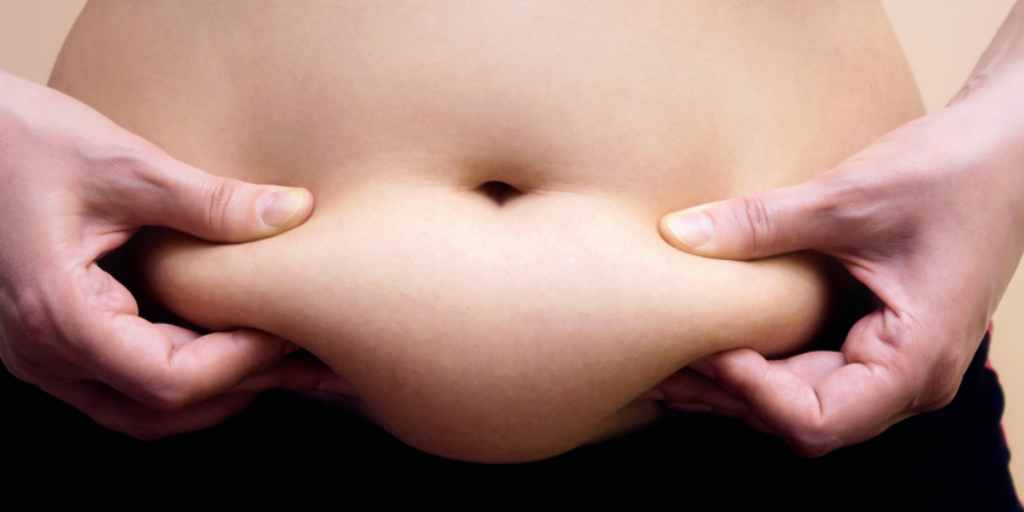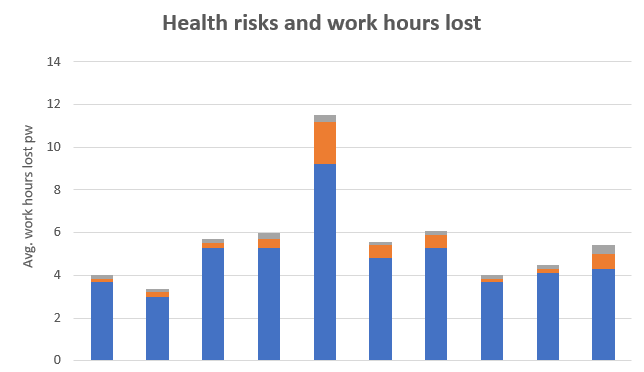Linking Body Fat and Musculoskeletal Pain

The association between body fat percentage and pain is significant and complex. It may be a more useful measure than the more commonly used Body Mass Index (BMI) in relation to musculoskeletal conditions.
It probably comes as no surprise that there is a strong link between BMI (ratio between your height and weight) and the likelihood of musculoskeletal pain. But as technology allows us to more easily assess body composition, we can explore the links between body fat and pain, and the results are interesting.
A systematic review and meta-analysis on precisely this topic has just been published in the Journal of BMC Musculoskeletal Disorders.
Why is BMI not a good way to measure the likelihood of body pain?
Worldwide, musculoskeletal conditions which may manifest as pain are second only to mental and behavioural problems in total years lived with disability. Musculoskeletal conditions often lead to avoidance of physical activity and an increase in BMI. The theory that excessive loading of joints is directly related to pain is likely an oversimplification of the complex relationship that occurs between weight, body fat percentage and musculoskeletal pain (1, 2). Most attention is directed towards the association between body weight and pain, but this disregards various metabolic, structural, and psychological links which are underappreciated.

The main issue with BMI is that it treats all tissues as equal. Under this assumption, 1kg of muscle has the same impact as 1kg of fat, whereas we know the two have completely different effects on biochemical processes in the body, joint loading, and pain.
Learn More: Measuring body composition
Why does fat increase your risk of musculoskeletal pain?
It has been shown that fatty tissues can increase inflammation throughout the body through a range of processes (3, 4, 5, 6). This indicates that apart from the biomechanical loading of a joint, the biochemical effects of increased body fat may accelerate degenerative joint diseases such as osteoarthritis.
These findings help explain why high levels of body fat are associated with osteoarthritis in non-weight bearing joints such as hands (7), where biomechanical loading isn’t weight related as it is in the knee.
What should you do to reduce your risk of body pain?
Body fat, and not BMI, is a more accurate predictor of musculoskeletal pain, especially osteoarthritis. There is a well-supported theory that excess body fat contributes to persistent, low grade inflammation. This inflammatory process can have a negative impact on multiple systems within the body, including your joints.
So to reduce your risk – focus on reducing your body fat, and try to maintain muscle mass. This might mean that you lose less weight overall but achieve a bigger reduction in your % body fat.
If you are interested in learning more about your body composition (muscle, fat and bone mass), we can assess this at our Newcastle Practice rooms using the InBody machine. The test is quick, easy and rebateable through your private health fund, and a great tool to track the impact of any changes you make to your diet and exercise habits.
Learn More: What could a weight loss program look like for your organisation
References:
- Hurwitz et al,. Knee pain and joint loading in subjects with osteoarthritis of the knee. J Orthop Res. 2000; 18:572-579.
- Bakker et al., Spinal mechanical load: a predictor of persistent low back pain? A prospective cohort study. Eur Spine J. 2007;16:933941.
- Younger, J., Association of Leptin with body pain in women. J Women’s Health. 2016;25:752-60.
- Zhang, P., Significance of increased leptin expression in osteoarthritis patients. PLoS One, 2015;21:536-541.
- Ding, C., Association between leptin, body composition, sex and knee cartilage morphology in older adults: the Tasmanian older adult cohort (TASOAC)
study. Ann Rheum Dis. 2008;67:1256-61. - Appleton, C., et al. Editorial. “Weighing in” on the Framingham osteoarthritis study: measuring biomechanical and metabolic contributions to osteoarthritis.
Arthritis Rheumatol. 2017;69:1127-30. - Walsh et al. The association between body fat and musculoskeletal pain: a systematic review and meta-analysis. BMC Musculoskeletal Disorders, (2018)
19:233.






